As tensions grow around the world, we resign ourselves to asking for aid from the European powers. In November 1937, we initiate measures to align ourselves with the Allies. Only the United Kingdom and the United States have fleets that are capable of being a match for the Japanese Navy. While we cannot hope for direct military intervention in the near future, and indeed the United States is still one of the Japanese Empire’s main trading partners, we fear that we will be excluded from the world’s resource markets if we are not aligned with one of the great factions.
Our war with Japan remains stalemated. The Japanese Kwantung Army has extended the frontlines westward until the borders of Xibei San Ma but seems to lack the resources to go any further. As winter approaches, our own troops in Shaanxi experience intermittent supply troubles which the Japanese are quick to exploit by launching attacks. But we always manage to restore our supply lines quickly enough that the attacks are fended off with relative ease. We do lose our first battle in the west foothills as some poorly organized units are forced to fall back, but reserve units and our allies manage to step into the breach quickly enough to prevent a general breakthrough.
Our biggest worry remains the Japanese blockade, which causes us to lose convoys and escorts at an astronomical rate. A large proportion of industrial output is devoted simply to replace these losses. Even so, we are unable to import sufficient coal to fully mobilize our industry to a war footing. Finally in December 1937, as our stockpiles drop to critical levels and our ship losses continue to mount, sapping the morale of our citizens, we decide to send out our flotilla of ships to assist in guarding our convoys. They will be torn to shreds if caught in the open sea by Japan’s battleships and heavy cruisers, but if we hold them back forever, they will soon be obsolete anyway.
This turns out to be a tremendous success. Our fast fleet of light cruisers and destroyers have orders to avoid any Japanese battle groups. Despite not finding any submarines, their mere presence seems to dissuade them from attacking our convoys. We are gradually even able to rebuild our depleted stocks. But the success does not last. At the end of December, our fleet runs into a Japanese naval force. Although we nominally win the ensuing naval battle, causing the Japanese to flee, we lose one of our destroyer flotillas and all of the other ships sustain serious damage while the Japanese lose none of their ships.
Though our fleet is now out of action, the respite from submarine attacks lasts for some time, allowing our factories to produce war material at full speed. In January 1938, we appoint Bai Chongxi to the post of Armament Minister as he seems to be capable of organizing our industry to make more efficient use of our natural resources. Indeed, he is so talented that he is nicknamed Xiao Zhuge, after the greatest strategist in the history of China. Also newly appointed to the cabinet is Kong Xiangxi, the richest man in China.
By mid-January, we have trained enough officers to lead our armies that we feel comfortable about redirecting almost all of our leadership on research and development. Priorities include improved techniques to process coal so as to reduce our dependence on imports, better weapons for our infantry, expansion of our supply network and naval doctrines that boost the ability of our escorts to protect our convoys. We also ambitiously begin projects that will eventually result in the expansion of our industrial base, once we have the resource base to support it.
As spring approaches and with the Japanese front being relatively quiet, we contemplate putting together a force to subdue Yunnan as we originally planned. We decide that three corps, two of them mountain specialists, would be sufficient for the task. But it proves to be the calm before the storm. In late February 1938, the Japanese mount an amphibious invasion directly behind our front and attempt to force a breakthrough by pounding the easternmost end of our lines at Huanghua province from both directions.
The Japanese land a total of seven combat divisions, including a division of light armor and two divisions of mountain infantry, plus three headquarters units north of the major city of Jinan. The city itself was protected by only a division of garrison troops and we had a militia division nearby as part of our strategic reserve. Additional militia divisions from Qingdao and Shanghai are immediately sent by train to the area. In addition, we peel off four divisions of infantry from our frontlines to deal with the threat.
By 9th March 1938, despite losing a few provinces, we manage to completely surround the landing force, thanks to assistance from the Shaanxi and Xibei San Ma warlords. The attack on Huanghua rages on. This would continue for nearly two weeks. We are forced to rotate in fresh divisions to hold the line while we note the Japanese doing the same thing on the other side of the river to keep up their assault. The Japanese finally give up on the 22nd March with grievous losses on both sides. Nearly 14,000 men are killed in the battle, the bloodiest yet of the war. One month later, the encircled landing force, low on ammunition and supplies, is completely annihilated.
We are confident the loss of this force will ensure that Japan will be quiescent for a time. Yet we have wounds of our own to lick. Several of our units have been depleted by the intense fighting and many more are exhausted. We take the the time to reorganize, heal and to issue new and improved equipment to our soldiers. Once our naval force is completely repaired, we send it out again to escort our convoys, enabling us to build up our stockpile of raw materials substantially.
But in May 1938, our task force runs into a Japanese battlegroup again and ends up being almost completely destroyed. All we have left are two badly battered light cruisers that are little more than scrap metal by the time they limp back to Shanghai. While we would like to build additional destroyers to replace our losses, we realize that it would be pointless to do so with our obsolete technology. Furthermore, despite our best efforts, none of the major nations appear willing to license their technology for us at any price. This reinforces the importance of aligning with one of the major factions so as to have access to their technology.
With many, many new convoy transports and escorts, backed by improved training and naval doctrines, becoming available over the next few months, we finally are able to reduce our losses to an acceptable level. Our experience has also shown that we can greatly improve security by running only a select few trade routes and heavily protecting each one with many escorts. Our stockpiles of resources grow so large that we can now seriously plan for industrial expansion on a vast scale.
In October 1938, after many months of preparation, we finally declare war on Yunnan. The assault consists of three corps, each aimed at one of the three key provinces of the territory. The two mountain corps do spectacularly well on this terrain, marching into their assigned sectors with relative ease. The single corps of infantry, assigned to their capital, take some time to clear out the defenders even with considerable artillery and air support. But the outcome was never in doubt. Almost exactly one year after we subdued the Communists, Yunnan is finally integrated into the Republic of China.
Unfortunately, our drive to unite China has unintended consequences. Neighboring countries protest against our war of aggression and even the Americans now seem to believe that we are a greater threat than the Japanese whose armies appear to sit impotently on our doorstep. Sinkiang applies for and is accepted into the Comintern, knowing that we would not dare to incur the wrath of the mighty Russian bear. We fear that Tibet will follow soon. The Guangxi Clique, the next obvious target, appears to be veering towards the Axis, though that might be turned to our advantage.
Defeating the warlords of Guangxi will be no easy task as they are more powerful than Yunnan and the Communists combined. Their territory may be small, but they hold some of the richest and most industrialized regions in all of China with a sizable and well-equipped military to match. Furthermore, we must take care to invade the territory with enough force that we will able to defend against a possible naval invasion from the Japanese who might take advantage of the conflict. Such a force will take time to assemble, yet if we take too long, we fear that the warlords may end up allying with the Japanese and preemptively attack us before we are ready.
Fortunately, with the resources and manpower of Yunnan integrated into our republic, we are now almost a major power in our own right. Our military still lacks air and naval support and neither our soldiers nor our officers are as well trained and experienced as those of the Japanese, but our infantry should now be qualitatively and quantitatively superior, thanks to our continued investments in better weapons and equipment and better land combat doctrines. Soon it will be the turn of the Japanese to fear us rather than the other way around.
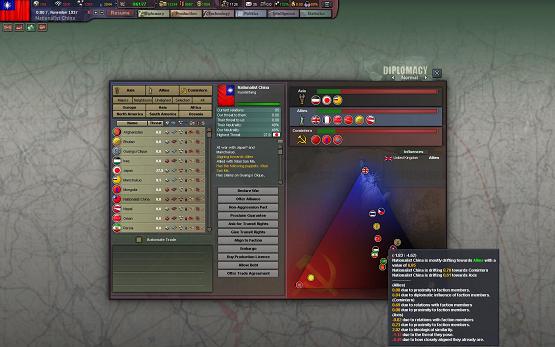
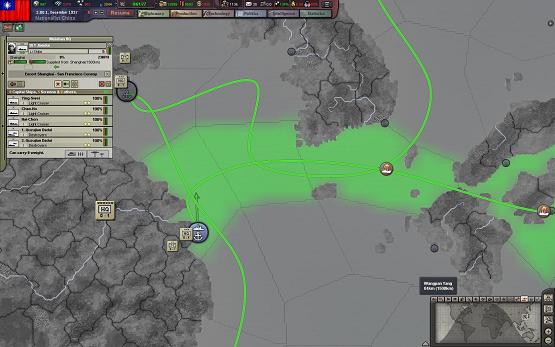
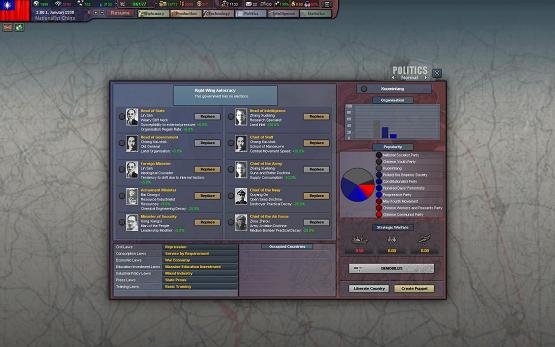
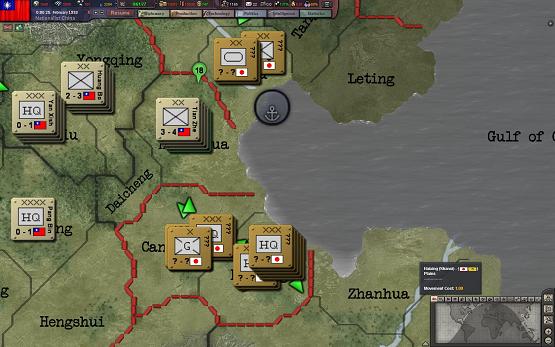
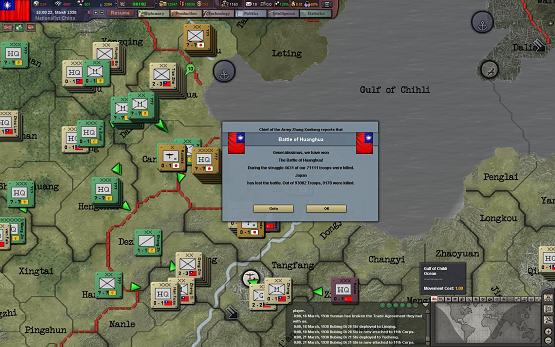
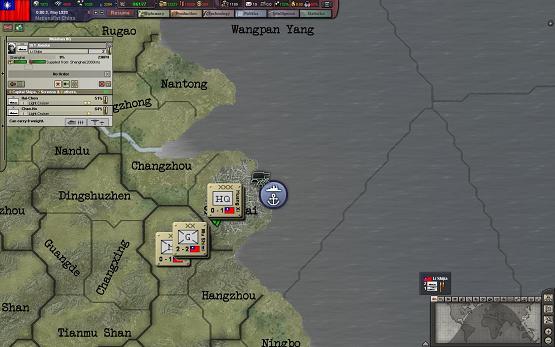
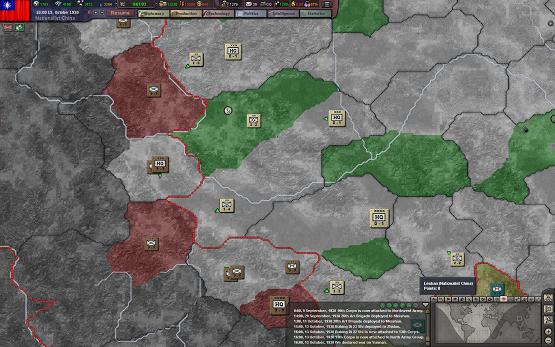
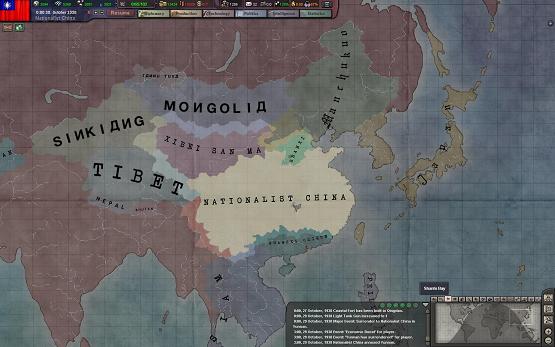
Leave a Reply